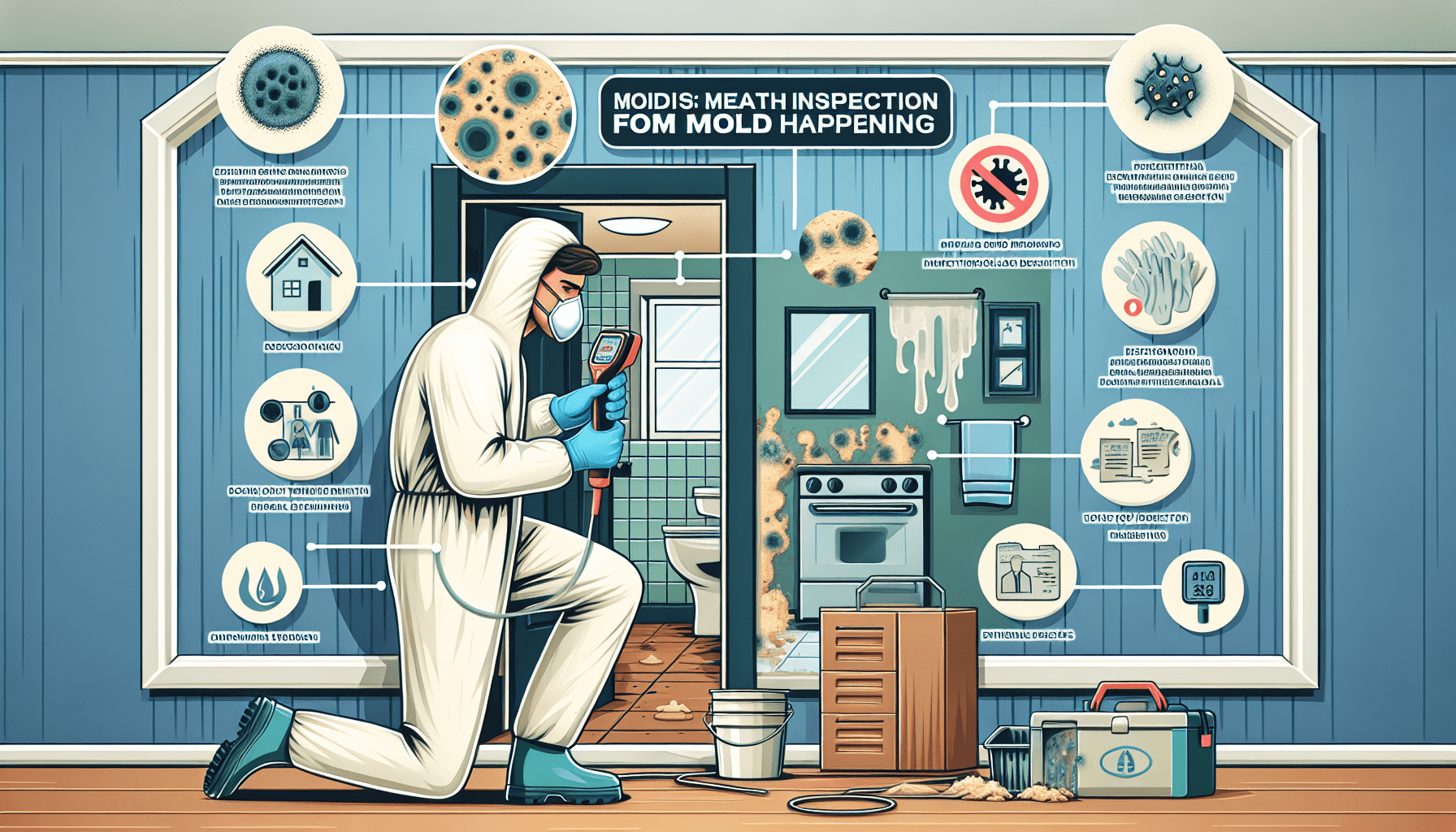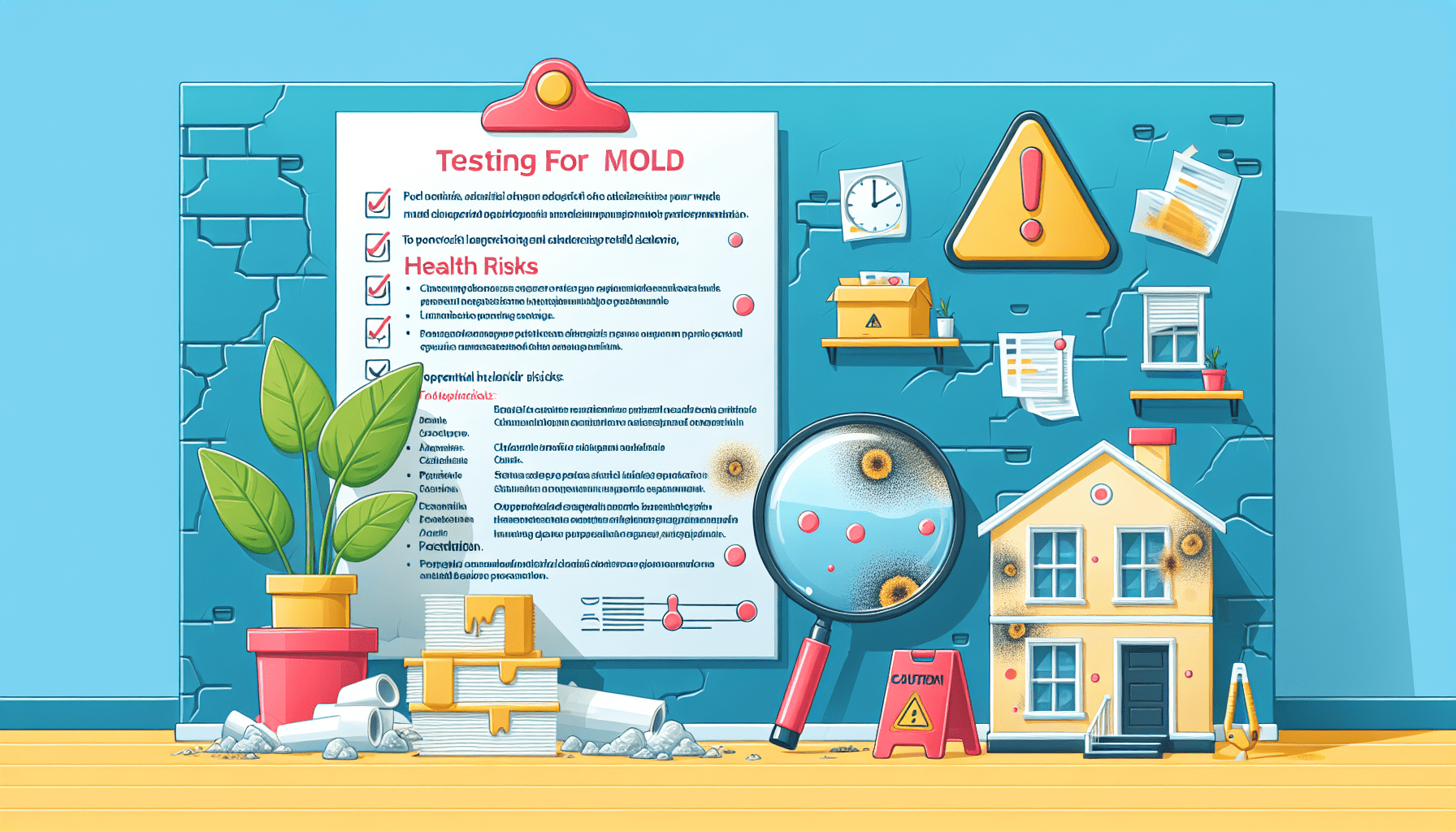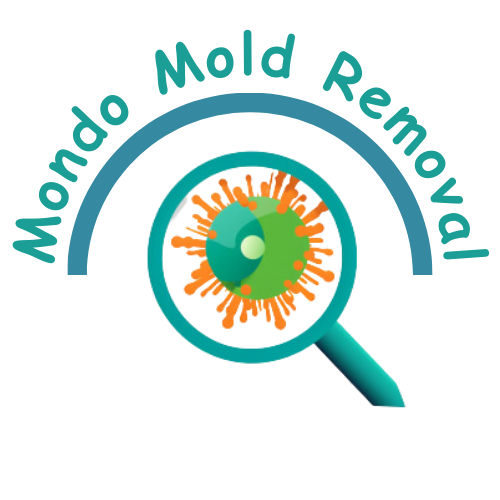Mold – a sneaky intruder that not only lurks in dark corners but also poses a potential threat to your health and home. In this article, discover the crucial reasons why Testing for mold in your home is an absolute necessity. From the detrimental impact it can have on your respiratory system to the structural damage it can cause, understanding the importance of mold testing will arm you with the knowledge to protect yourself, your loved ones, and the cherished sanctuary you call home. So, let’s delve into the world of mold and shed light on why it’s essential to take action now.
Health Risks of Mold

Respiratory Issues
Mold can have a significant impact on your respiratory health. When you are exposed to mold spores, they can trigger various respiratory problems such as coughing, wheezing, and shortness of breath. People with preexisting respiratory conditions such as asthma may experience worsened symptoms in the presence of mold. It is essential to address mold issues promptly to protect your lungs and overall respiratory well-being.
Allergic Reactions
For individuals with allergies, mold can become a major trigger. The allergenic properties of mold can lead to allergic reactions, including sneezing, itching, runny nose, and watery eyes. These symptoms can be particularly bothersome for those with seasonal allergies or sensitivities to mold. Testing for mold in your home can help identify and mitigate potential allergenic mold species, creating a healthier environment.
Irritation of the Eyes, Nose, and Throat
Mold can irritate sensitive mucous membranes, leading to discomfort in the eyes, nose, and throat. This irritation can manifest as redness, itchiness, sore throat, and nasal congestion. Prolonged exposure to mold can exacerbate these symptoms and potentially lead to more severe health issues. Testing for mold is crucial to address these irritants and prevent further discomfort.
Exacerbation of Asthma Symptoms
If you have asthma or are living with someone who does, mold can pose significant risks. Mold spores can trigger asthma attacks or increase the frequency and severity of symptoms such as coughing, wheezing, and chest tightness. It is vital to identify and eliminate mold sources in your home to ensure a safe and asthma-friendly living environment. Testing for mold can help you better manage and control your asthma symptoms.
Hidden Mold
Why Mold Can Be Hidden
Mold thrives in damp and dark environments, making it prone to hiding in various areas of your home. It can grow behind walls, underneath carpets, inside ventilation systems, and even within household appliances. The hidden nature of mold makes it challenging to detect and eradicate, emphasizing the need for thorough testing to identify and address hidden mold issues effectively.
Signs of Hidden Mold
Detecting hidden mold can be tricky since it is not readily visible. However, there are some signs that may indicate its presence. Discoloration or stains on walls, ceilings, or floors might be an indication of hidden mold growth. Musty or earthy smells are also a clue that mold might be lurking nearby. Additionally, experiencing unexplained health symptoms like allergic reactions or respiratory issues without any visible mold could be a sign of hidden mold in your home.
Examples of Hidden Mold Locations
Mold can hide in numerous areas within your home, and it’s important to be aware of these potential mold hotspots. Behind wallpaper or peeling paint, within HVAC systems, under sink cabinets, in basements or crawl spaces, and even within your mattress are all places where hidden mold can thrive. Regular mold testing can help identify these hidden problem areas, allowing you to take prompt action to mitigate mold growth and prevent further damage.
Preventing Mold Growth
Reducing Moisture Levels
Mold thrives in moist environments, so reducing moisture levels is crucial in preventing its growth. Ensure proper ventilation in areas prone to humidity, such as bathrooms and kitchens, by using exhaust fans or opening windows. Address any leaks or water damage promptly, and use dehumidifiers in damp areas to maintain optimal humidity levels. By keeping your home dry and moisture-free, you can significantly lower the risk of mold growth.
Proper Ventilation
Proper ventilation plays a vital role in preventing mold growth. Ensure good airflow throughout your home by using fans, opening windows, and keeping doors ajar to allow air circulation. When cooking or showering, use exhaust fans to remove excess moisture from the air. Ventilation is particularly essential in areas prone to high humidity, such as bathrooms, laundry rooms, and basements. By keeping the air circulating, you create an environment that is less favorable for mold to thrive.
Fixing Leaks and Water Intrusion
Water leaks and intrusions can create the perfect breeding ground for mold. Detect and fix any leaks in your plumbing, roof, or windows promptly to prevent water from seeping into your home. Inspect your gutters and downspouts regularly to ensure proper drainage away from your property’s foundation. By addressing water issues promptly, you can minimize the risk of mold growth and potential damage to your home’s structure.
Regular Cleaning and Maintenance
Regular cleaning and maintenance are essential in preventing mold growth. Keep your home clean and dry by regularly vacuuming, dusting, and mopping. Pay special attention to areas prone to moisture, such as bathrooms, kitchens, and basements. Clean and disinfect surfaces frequently to eliminate any potential mold spores. By maintaining a clean and well-maintained home, you can proactively prevent mold growth and ensure a healthy living environment.
When to Test for Mold
Visible Signs of Mold
If you notice visible signs of mold growth in your home, such as black or green patches on walls, ceilings, or other surfaces, it is important to test for mold. Visible mold growth indicates an existing mold problem that needs to be addressed promptly. Testing for mold can help determine the extent of the infestation and guide proper remediation measures.
Water Damage
If your home has experienced water damage, whether from a leak, flooding, or excessive moisture, it is crucial to test for mold. Water damage creates an ideal environment for mold to grow, and mold can start developing within 24-48 hours after exposure to water. Even if there are no visible signs of mold, testing can help detect any hidden mold growth resulting from water damage.
Musty Odor
A persistent musty or earthy smell in your home can be an indication of mold growth. If you notice an unpleasant odor that lingers despite regular cleaning, it is wise to conduct mold testing. The musty smell is typically caused by microbial volatile organic compounds (MVOCs) released by mold colonies. Testing for mold can help you pinpoint the source of the odor and take appropriate remediation actions.
Health Symptoms
If you or your family members experience unexplained health symptoms such as persistent coughing, sneezing, itchy eyes, or respiratory issues, mold exposure might be the culprit. Testing for mold can help determine if mold is indeed the cause of these symptoms and guide you in creating a healthier indoor environment. If you suspect mold-related health issues, it is essential to test for mold and seek medical advice if necessary.
DIY Mold Testing Kits
How They Work
DIY mold testing kits are designed to help homeowners identify the presence of mold in their homes. These kits typically include sampling materials and instructions for collecting samples from various surfaces or the air. Once the samples are collected, they are sent to a laboratory for analysis. The lab will provide a report indicating the types and quantities of mold present in the samples.
Advantages and Limitations
One advantage of DIY mold testing kits is their affordability and accessibility. They offer a convenient option for homeowners to conduct an initial assessment of mold in their homes. However, it is important to note that DIY kits have limitations. The accuracy of the results can vary depending on the user’s ability to collect samples correctly, and the interpretation of the results can be challenging without professional expertise.
Types of DIY Mold Testing Kits
There are different types of DIY mold testing kits available on the market. Surface sampling kits involve swabbing, tape-lifting, or placing a sticky tape over a suspected mold area to collect samples. Air sampling kits typically use a pump or air collector to capture airborne mold spores. Some kits may also include bulk sampling options for collecting material from suspected mold-infested materials.

Interpreting Results
Interpreting DIY mold testing kit results can be complex, especially for those without a background in mold identification. The laboratory report will provide information on the types and quantities of mold found in the samples. However, determining the significance of these findings and the necessary remediation actions may require professional consultation. It is advisable to seek expert advice to ensure accurate interpretation and appropriate measures for mold remediation.
Professional Mold Testing
Benefits of Hiring a Professional
Hiring a professional mold testing company offers numerous benefits when it comes to accurately identifying and assessing mold infestations. Professionals have the expertise and experience to conduct thorough mold inspections, collect proper samples, and interpret lab results accurately. They can offer comprehensive assessments of your home’s mold situation and recommend appropriate remediation measures tailored to your specific needs.
Types of Professional Mold Testing
Professional mold testing typically involves various types of sampling methods to evaluate the extent of mold contamination. Surface sampling involves swabbing or tape-lifting suspected mold areas to collect samples for laboratory analysis. Air sampling collects airborne mold spores, providing insight into the overall mold spore levels in the indoor environment. Bulk sampling involves gathering material samples from suspected mold-infested materials for analysis.
Choosing a Reliable Mold Testing Company
When selecting a professional mold testing company, it is important to choose a reliable and reputable service provider. Look for certified professionals with experience in mold testing and remediation. Seek referrals from trusted sources or read reviews and testimonials about the company’s services. Additionally, ensure the company follows industry standards and uses accredited laboratories for sample analysis. Choosing the right mold testing company is crucial for accurate and reliable results.
Cost of Professional Mold Testing
The cost of professional mold testing can vary depending on various factors, including the size of your home, the number of samples collected, and the extent of the mold infestation. Typically, professional mold testing services range from a few hundred to a few thousand dollars. While the cost may seem high, it is a worthwhile investment in ensuring the health and safety of your home and family. Remember, accurate testing leads to effective remediation and future prevention of mold issues.
Determining the Extent of Mold Contamination
Surface Sampling
Surface sampling involves collecting samples from suspected mold-contaminated surfaces using swabs, tape lifting, or other collection methods. These samples are then sent to a laboratory for analysis. Surface sampling helps identify the types and quantities of mold on the surface and provides valuable information for remediation and prevention efforts. It is an essential tool in determining the extent of mold contamination in your home.
Air Sampling
Air sampling is designed to capture airborne mold spores in the indoor environment. This method helps measure the overall mold spore levels in the air and provides insight into the presence of hidden mold. By analyzing the collected air samples in a laboratory, professionals can determine the types and quantities of mold present. Air sampling is especially useful when there are no visible signs of mold but mold-related health symptoms persist.
Bulk Sampling
Bulk sampling involves collecting material samples from suspected mold-infested materials, such as walls, floors, or furniture. The samples are then sent to a laboratory for analysis to determine the presence and extent of mold growth within the materials. Bulk sampling helps evaluate the severity of mold contamination and guides appropriate remediation measures tailored to the specific affected areas.
Health Inspection and Remediation
Interpreting Lab Results
Once the mold samples have been analyzed in a laboratory, the results will indicate the types and quantities of mold present in your home. Interpreting these lab results can be complex without professional knowledge. A certified mold inspector can help interpret the findings and assess the severity of the mold contamination. They can provide expert advice on the necessary steps for effective mold remediation.
Seeking Professional Advice
If you receive positive lab results indicating mold contamination in your home, it is crucial to seek professional advice for appropriate remediation measures. A qualified mold remediation specialist can assess the extent of mold growth, identify the source of moisture, and develop a tailored plan to eliminate the mold while ensuring the prevention of future growth. Professional guidance is essential to ensure the safety and efficacy of the mold remediation process.
Mold Remediation Techniques
Mold remediation techniques vary depending on the extent of mold contamination and the affected areas. They may include physical removal of mold-infested materials, thorough cleaning and disinfection, moisture control measures, and proper ventilation. In some cases, containment strategies and specialized equipment may be necessary to prevent the spread of mold spores during the remediation process. Professional mold remediation services can ensure these techniques are employed correctly to achieve maximum effectiveness.
Preventing Future Mold Growth
After mold remediation, preventing future mold growth is crucial for maintaining a safe and healthy living environment. This involves addressing any underlying moisture issues, improving ventilation, and implementing preventive measures. Regular inspections, proper maintenance, and prompt response to any signs of water damage or mold growth are essential. By taking proactive measures, you can minimize the risk of future mold infestations and ensure a mold-free home.
Insurance Coverage for Mold Damage
Understanding Insurance Policies
Understanding your insurance policies is essential when it comes to coverage for mold damage. While most standard homeowners’ insurance policies cover sudden and accidental water damage, they often exclude coverage for long-term mold issues resulting from maintenance or moisture problems. It is important to review your policy in detail and consult with your insurance provider to understand the extent of your coverage and any exclusions related to mold damage.
Mold Exclusions and Limitations
Mold damage exclusions are common in insurance policies due to the potential for frequent and costly claims. Insurance policies may vary in their specific language and limitations regarding mold coverage. Some policies may provide limited coverage for mold remediation if it is a result of a covered peril, such as a burst pipe. However, coverage for mold related directly to long-term moisture issues or lack of maintenance may be excluded. It is crucial to thoroughly review your policy for any mold-related exclusions and limitations.
Filing a Mold Damage Claim
If you experience mold damage in your home, it is important to follow the proper procedures for filing a claim with your insurance provider. Document the damage with photographs and detailed descriptions, including any evidence of water intrusion or mold growth. Contact your insurance company as soon as possible to report the claim and follow their instructions for submitting supporting documentation. An adjuster will assess the damage and guide you through the claims process, including coverage details and potential reimbursement for mold remediation expenses.
Conclusion
Taking action to test for mold in your home is crucial for maintaining a safe and healthy living environment. Mold can pose significant health risks, including respiratory issues, allergic reactions, and the exacerbation of asthma symptoms. By testing for mold, especially hidden mold, you can identify and address mold problems before they escalate.
Preventing mold growth through moisture reduction, proper ventilation, and regular cleaning is key to avoiding mold infestations. However, if you do suspect mold in your home, there are options for testing its presence. DIY mold testing kits offer convenience and affordability, while professional mold testing provides expert analysis and guidance for remediation.
Determining the extent of mold contamination through surface sampling, air sampling, and bulk sampling helps in assessing the severity of the mold problem. Health inspections and appropriate mold remediation techniques are crucial for effectively addressing mold growth and preventing future issues.
Understanding your insurance coverage for mold damage is important, as policies may have exclusions and limitations. Being aware of the coverage details and following the correct procedures when filing a mold damage claim can help ensure reimbursement for remediation expenses.
By taking proactive measures and testing for mold, you can create a safe and healthy living environment free from the health risks associated with mold contamination. Your well-being and the well-being of your loved ones are worth the effort in ensuring a mold-free home.






